
A few months ago I was at a dinner party at a friend’s house in Milan and mentioned to someone that I was thinking about going to Parma that coming Saturday.
“Oh, I just went to Parma for the first time, actually!” he said. “Just for the day, though. Some friends and I went last weekend, visited the theater, had dinner and then came back to Milan.”
Theater? “What theater?” I asked.
That was the first time I had ever heard of Teatro Farnese. Unbeknownst to me, along with the duomo and baptistry, the baroque theater is one of the most popular sights in Parma. When I went there myself, I understood why.
Teatro Farnese is housed within Palazzo Pilotta, a short walk from the train station. It was built in 1618 by the Ferrarese architect Giovan Battista Aleotti, commissioned by Ranuccio I, duke of Parma and Piacenza, to celebrate Cosimo di Medici’s visit to Parma after the two families were united through marriage. Cosimo had to cancel the trip due to health problems, though, so the inaugural performance only happened in 1628, on the occasion of the marriage of Margherita de’ Medici and the Duke Odoardo. At the end of the performance of “Mercurio e Marte” (”Mercury and Mars”) by Claudio Achillini and Claudio Monteverdi, the floor of the theater (not just the stage!) was filled with water to act out a naval battle.
Teatro Farnese was a private theater, used only for state visits and celebrations. Can you imagine such an ornate theater built only for private use?! Originally, all of the woodwork and plaster was painting to look like marble. The arches under the balcony boxes (possibly the first-ever balcony boxes, by the way) were painted to look as if they had depth and continued on into an outer hall, when in fact they were simply walls of plaster.
Because of its private status, from its inauguration in 1628 till the final performance in 1734, the theater was only used 9 times. After 1734, this incredible venue was left for ruin until May 1944, when most of it was destroyed by Allied bombs. After WWII, the theater was rebuilt to its original design but the restored sections were left in wood, not painted. Looking around at how much is plain wood, it’s incredible to imagine the amount of damage!
Visitors can now walk through the restored theater, onto and behind the stage, and under the seating benches, like at a high school football stadium. Unlike a high school football stadium, I didn’t find any teenagers making out but I did find some recovered statues (including some creepy baby angels hanging from the ceiling) and a small model of the theater. Behind the stage is a gallery of paintings. My favorite view, though, was looking out from the sloped stage into the theater and imagining it filled with 17th-century Italian nobility, dressed to the 9′s and anxiously awaiting a rare and special performance. Magical.
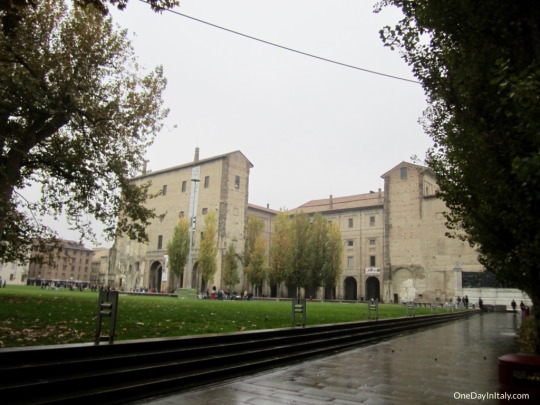
(Palazzo Pilotta from the street)
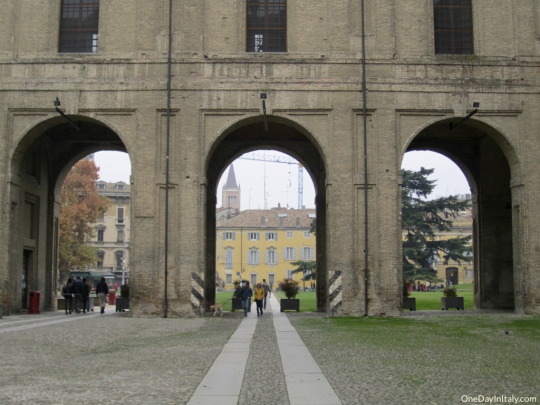
(The entrance to Teatro Farnese and the National Museum are under these arches)

(The entrance to Teatro Farnese)
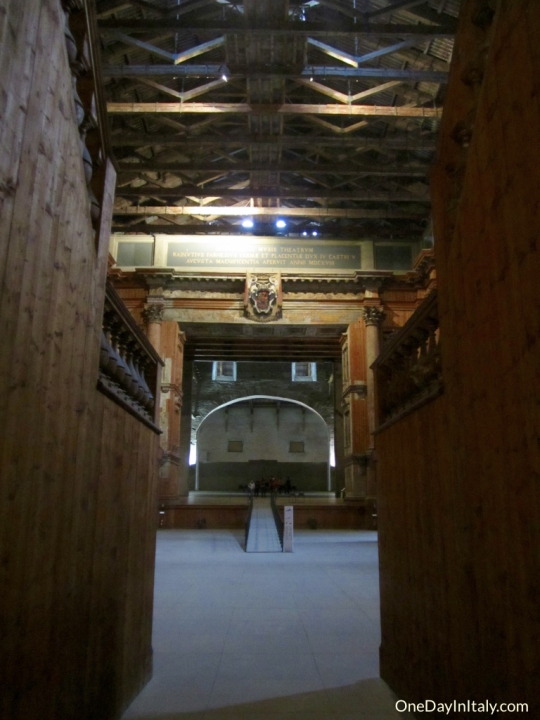
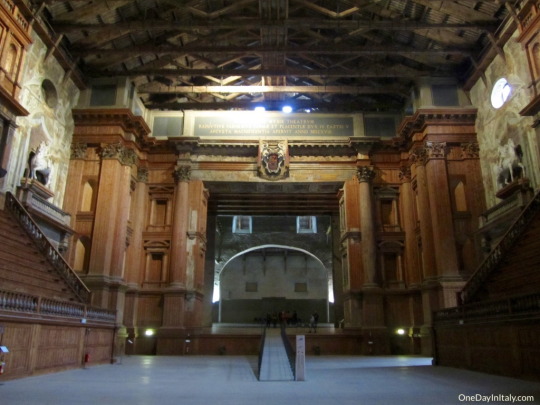

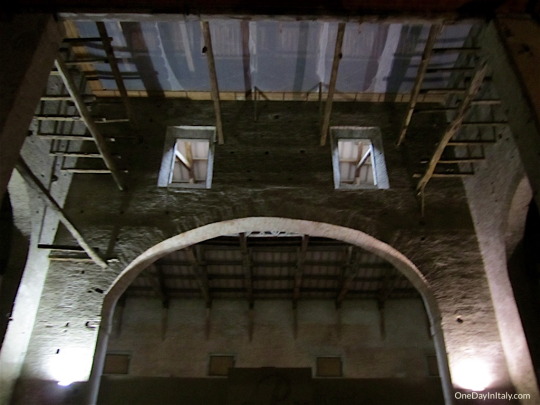
(Looking toward the back of the stage)
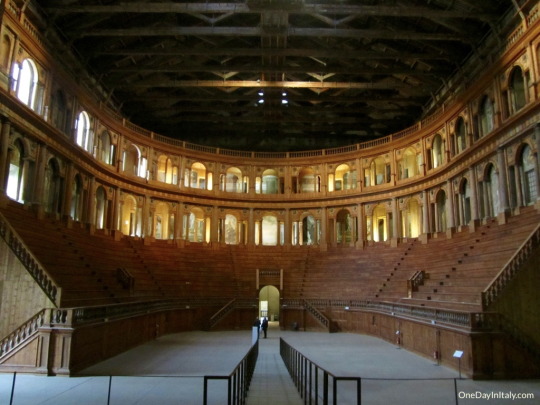
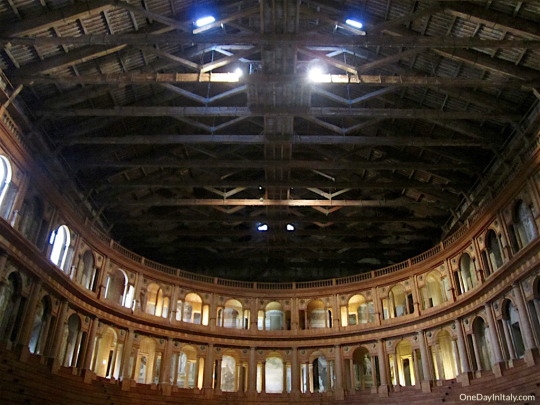
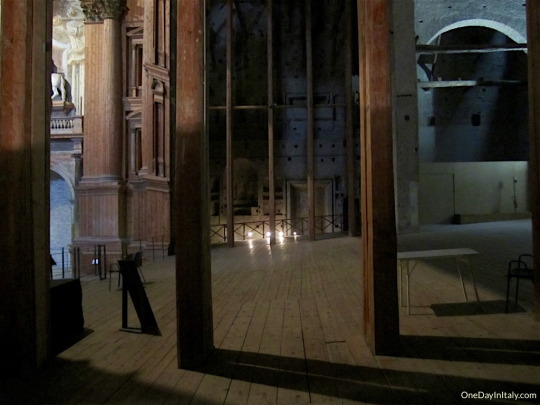
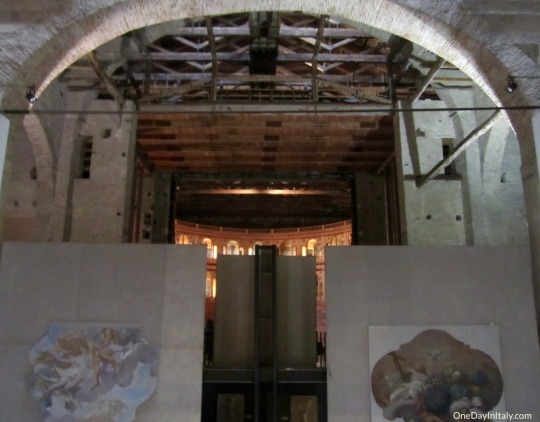
(From behind the stage, which is now housing a gallery)
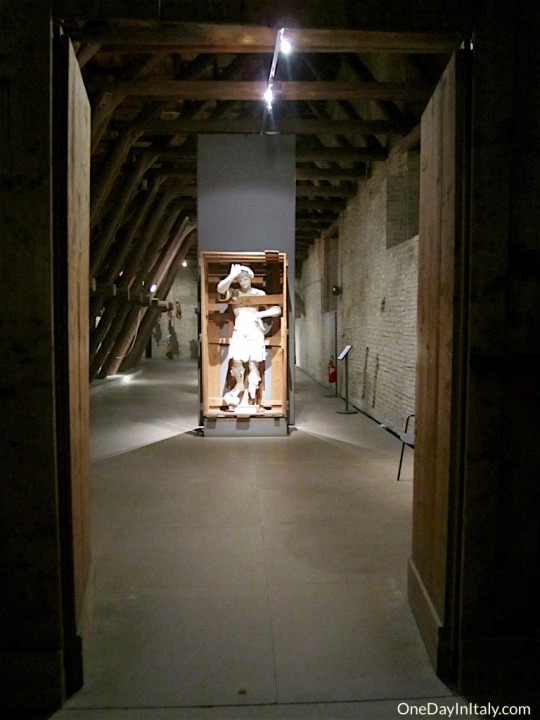
(Entering the section under the bleachers)
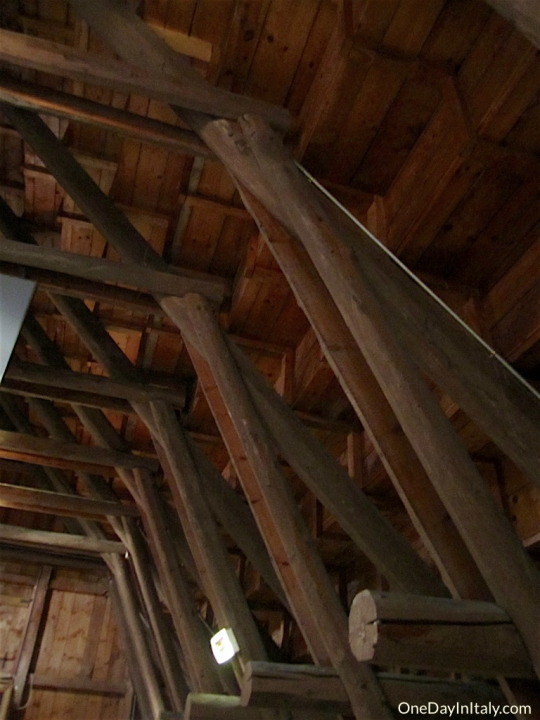
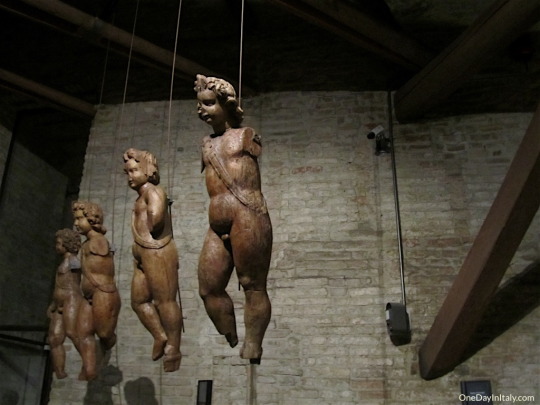
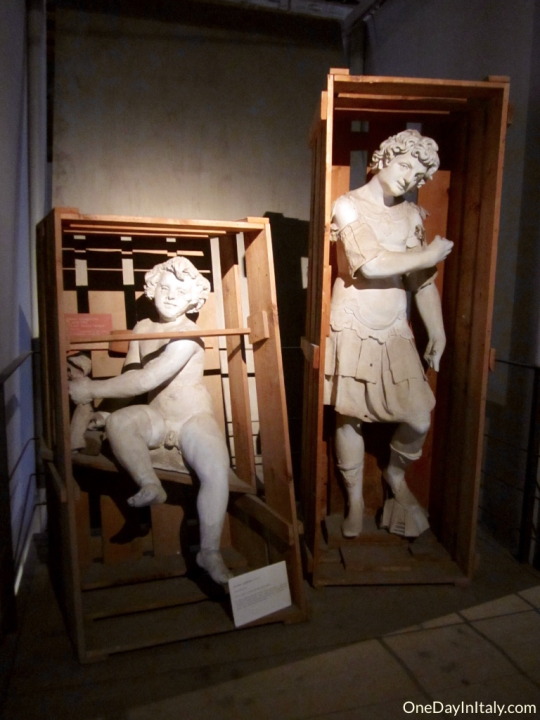
Comments
comments












Leave a Reply